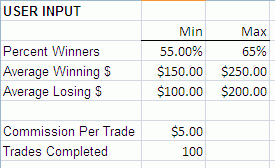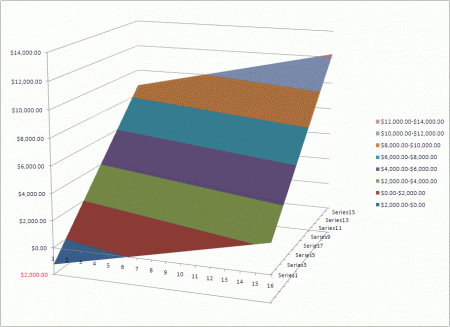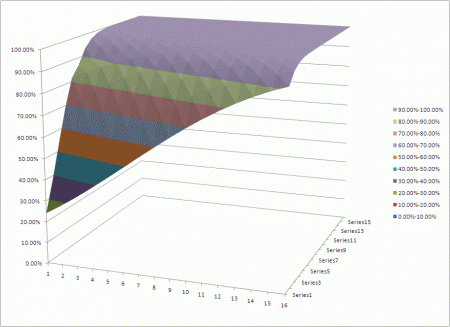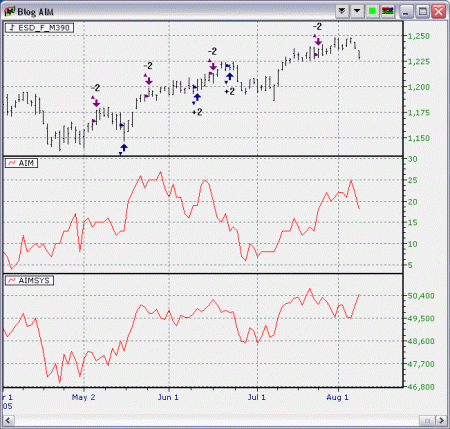Performance Sensitivity
For most traders, when tracking their own performances, or measuring the performance of trading systems, a tendency is to look for almost perfect improvement over time. We always want the performances to get better, stay in top shape, etc. In reality, such push can be harmful and can backfire.
Attached is an Excel spreadsheet showing the potential reason why and how to monitor trading performances using a relaxed condition that works well over the long term.
The Spreadsheet
In the software store
How to Use It
It is as simple as entering all the information into the User Input page.
The rest of the workbook gives you the results.
Performance in Terms of Dollar Value
In general, the performance of a trading model or trading style would have its dollar value performance landing on a flat surface in a 3D plot against the changes in winning percentage and relative win/loss $ on a per trade basis.
In layman’s term, that means a change in your model/style winning %, you will see direct impact on the performance at once. If there is a change in your average winner amount relative to the average loser amount, you will see a similar impact.
For example, if your usual performance is in the 70% hit rate, then a drop of 5% of your performance will impact your net profit level by 5%. As a discretionary trader, if you can keep your performance within a +/- 5% range from 70% most of the time, your trading style is doing ok as long as your winner to loser ratio stays constant most of the time.
On the other hand, if your usual performance is on average at the 60% level, then a drop of 5% may imply net negative return when your winner to loser ratio is at the lower end. For many beginner or struggling traders, that implies the need to improve either, or both, of your winning % and winner to loser ratio.
Performance in Terms of Probability to Breakeven or Better
This graph is a great tool that illustrates how the ellusive trading edge can be defined. It is a graph of the likelihood that your trading style or model would be able to breakeven or doing better than that. Notice that we are no longer talking about a flat surface in 3D. The probability surface is a curved surface where a drop in one of the performance statistics can affect your probability to breakeven a lot more than an increase in the same statistics.
Given any trading method, style, or model, provided that either the percentage winner or the average winner to loser $ value is at a very high level, the weaknesses in the other end of the model can be compensated where consistent performance can be expected.
For example, a system with extremely high winning % can work with very low winner to loser ratio and still coming out ahead, provided the fluctuation in the performance is within acceptable boundary.
If a system has a very high winner to loser ratio, then lower winning % is not necessary a problem as long as the winner to loser ratio stays in top form.
Personal Experience
Do you know if your edge is entry based or money management based?
Entry based edge needs high winning % to enable the system to perform (i.e. positive result).
Money management based edge needs high average winner to loser ratio to maintain its edge.
Know your trading style/model and monitor the related performance statistics to stay in top form!














